Monuments, community, public heritage: interview with artist Cosimo Veneziano
Cosimo Veneziano (Moncalieri, 1983) is a contemporary artist whose works, as critic Elena Forin has written, “investigate the vast universe of images of social, architectural and urban heritage.” Central in his art is the reflection on nature, destination and survival on monuments, but also on the theme of community and identity. Works that make use of different techniques and often draw inspiration from literature. On January 29 Cosimo Veneziano’s first Roman solo exhibition opens, entitled Break the window and steal the fragments!: we interviewed the artist, whom we thank for his availability, to talk about his art. Enjoy reading!
FSA. Let’s start with one of your latest works, the Petrolio series: one of the works in the series recently was also included in the Deposito dellArte Italiana Presente at the last edition of Artissima in Turin. This is a very interesting research: drawings on canvas of ancient sculptures that are covered with felt to investigate the erasure of monuments of antiquity, with the felt suggesting the idea of censorship and the destruction of art. Why is the oil element the starting point for reflection?
CV. The reflection on monumental iconography starts from the book Petrolio by Pasolini, where in some points of the novel the strong symbolic value of the Middle Eastern landscape is described. In addition, the work also starts from the assumption that the installation of a monument in public space involves the selection of a historical fact or character considered crucial for the community, I wonder what weight the destruction of a heritage recognized as collective might have.
Still of covered and censored works, but for other reasons, we speak with the ceramic casts of the Membrane series. Where did the idea for these sculptures come from and what connects them to the Petroleum series?
To extend the discussion, I have also joined these works with a new nucleus of ceramic sculptures, reproductions of those female statues kept in the Capitoline Museums in Rome and concealed on the occasion of Iranian President Hassan Rouhani’s visit to Rome. Erasing, hiding, covering or decontextualizing images is thus for me the mechanism put in place to experiment with such issues and to share them with the viewer.
One of the most consistent strands of your research is the investigation of the relationship between society and monuments, a strand that goes back to your beginnings, when with The Possibility of an Island you asked the citizens of a complicated neighborhood to photograph what they thought was important about their area...
Yes, that is a very old work of mine, not even present in the book I edited with Silvio Zamorani Editore, born initially as research within the Academy and then developed into my first solo exhibition, where I tried to reconstruct the symbols present in a neighborhood of Turin. The work was very immature but it was ambitious, both for the scope of the space you know for the research material exhibited such as the photos, the relationship maps, the large drawing and the soundtrack designed by musician Roger Rama.
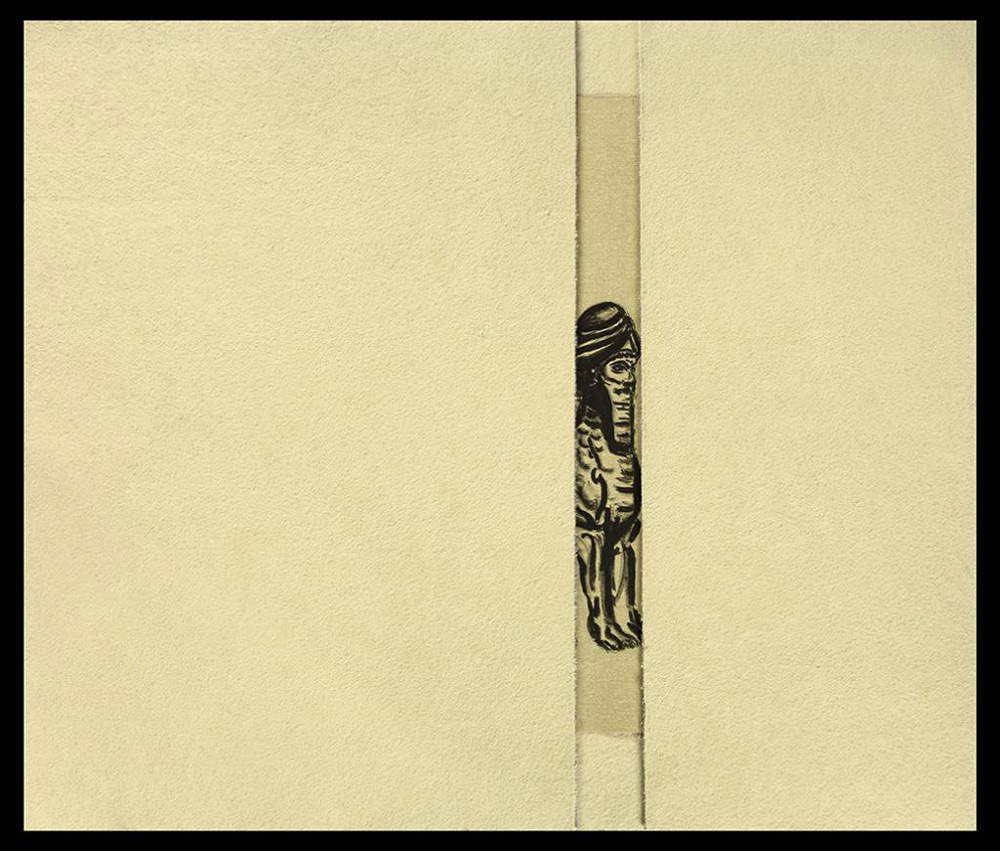 |
| Cosimo Veneziano, Untitled (from the series Petrolio; 2015; ink drawing on canvas, industrial felt, 80 x 100 cm; Courtesy Alberto Peola Artecontemporanea) |
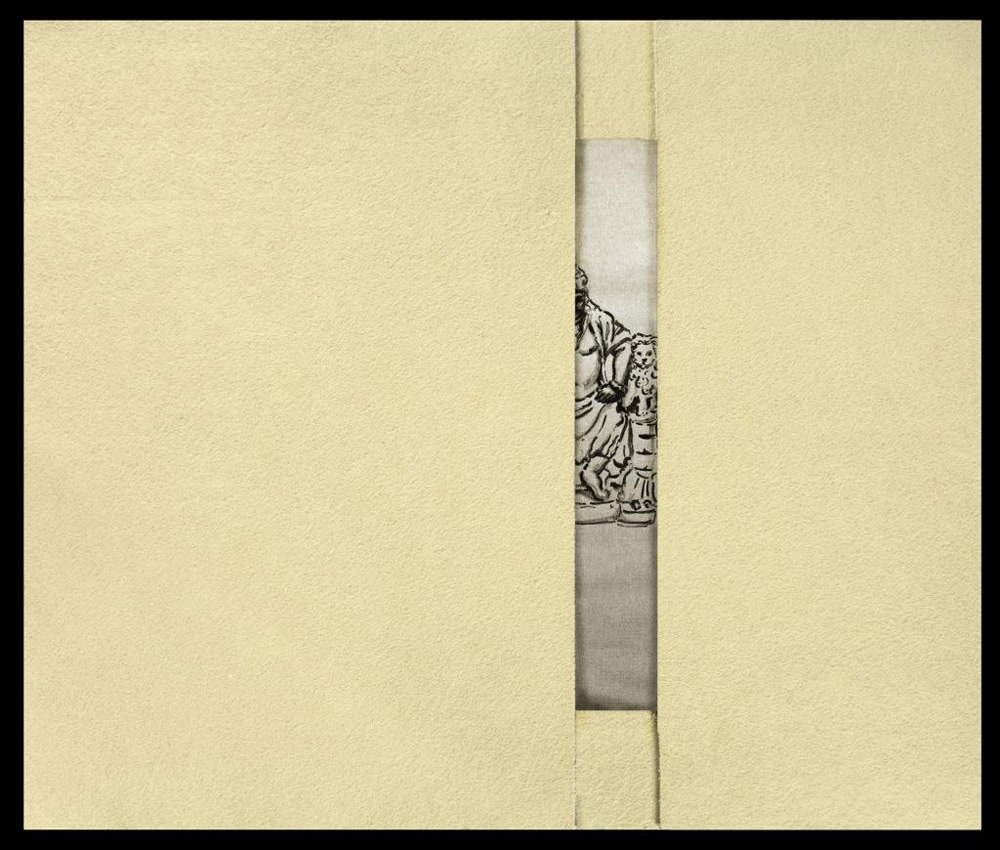 |
| Cosimo Veneziano, Untitled (from the series Petrolio; 2015; ink drawing on canvas, industrial felt, 80 x 100 cm; Courtesy Alberto Peola Artecontemporanea) |
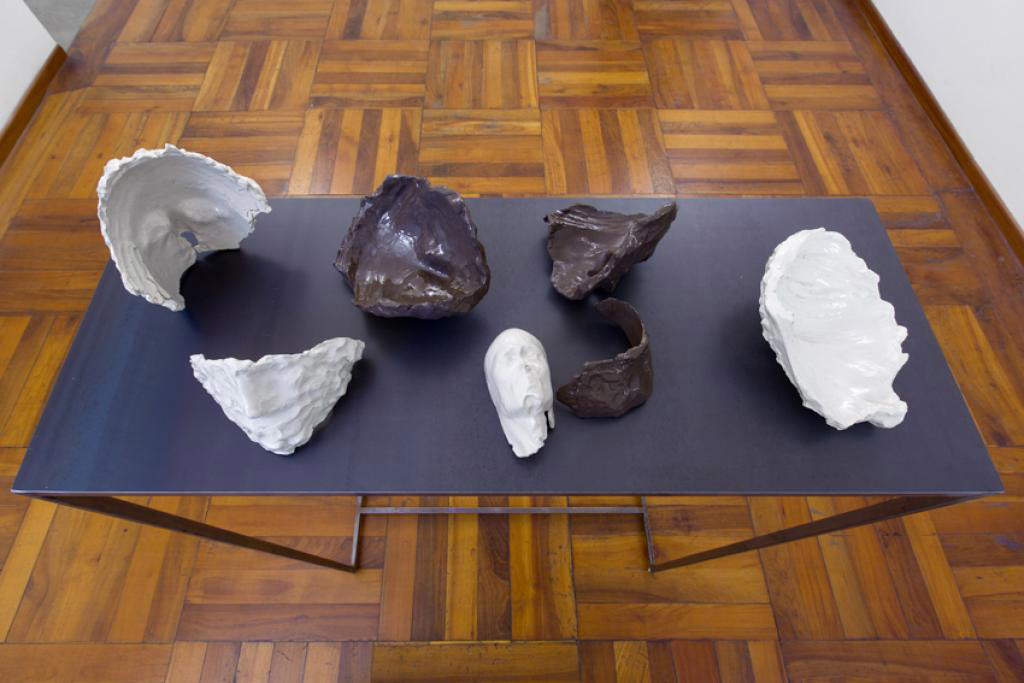 |
| Cosimo Veneziano, Membrane (2017; ceramic sculptures, 10 x 15 cm; Courtesy Alberto Peola Artecontemporanea) |
In his last solo exhibitions in Turin, we saw works from the series Days of a Future Past. A reflection on art-power-propaganda closely related to the other works you have made in the last year...
Yes, I am always fascinated by the use of images and iconography that make up various political movements, because they use or invent styles. With the spread of the internet, these iconographies are also being overwhelmed and used by the individual because now in a few seconds we can search for an image, capture it and change it to our liking. So this mechanism is creating a schizophrenia where some symbols linked to specific political movements are being “stolen” by opposing movements or parties.
His latest exhibition, which opens Jan. 29 in Rome, and which he synthesizes Break the window and steal the fragments, aims to reason on the theme of the survival of monuments to the changes of history. Another highly topical theme. The curator of the exhibition, Benedetta Carpi De Resmini, wrote that His art breaks down and shatters the idea of a public work and brings it back among us, with what remains and giving it another life, because its life is inherent in the interpretation. Is it then within the personal sphere of individuals (and thus within these fragments) that monuments survive?
Yes, they can survive in “our” personal sphere.
The same reflection can be conducted not only for monuments but also for works that are seemingly more insignificant but nevertheless charged with history: His Bank of Italy in this sense is a very powerful work...
Yes, that simple inscription is dense with meaning because it speaks of a natural heritage, a driving economic element like marble of an entire region of Italy, and also an architectural symbol of a period of economic and social well-being that was the headquarters of the “Bank of Italy” in Massa.
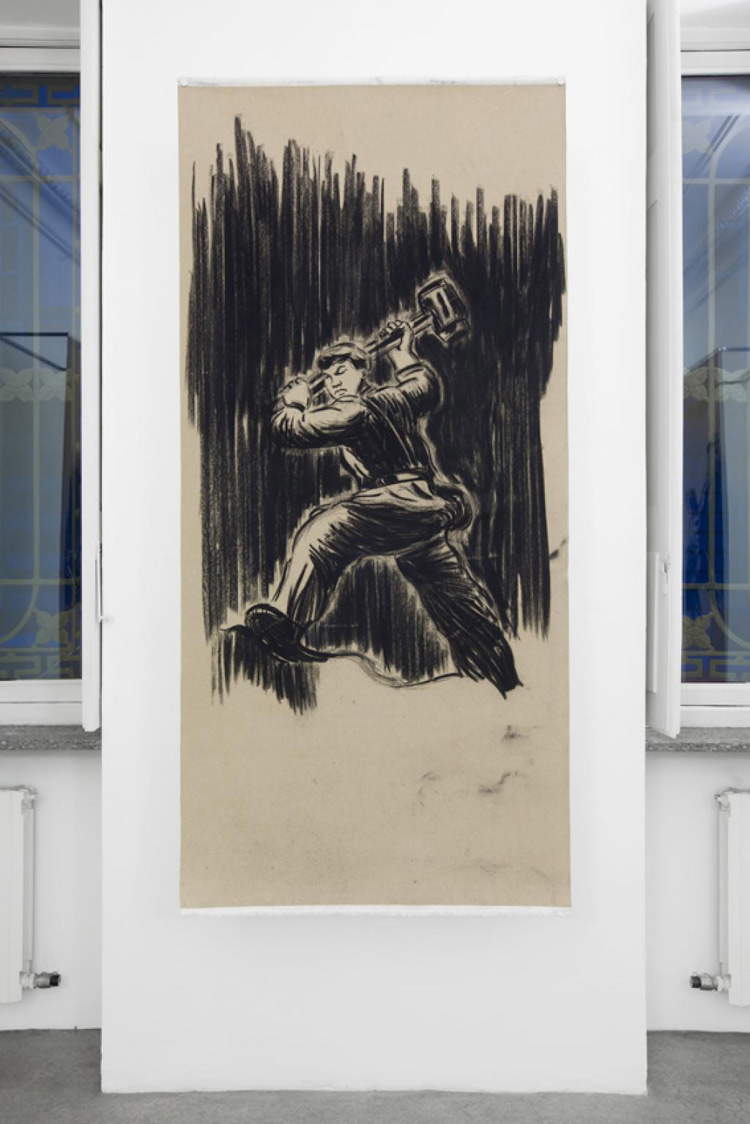 |
| Cosimo Veneziano, Days of a Future Past (2017; charcoal on canvas, 100 x 200 cm; Courtesy Alberto Peola Artecontemporanea) |
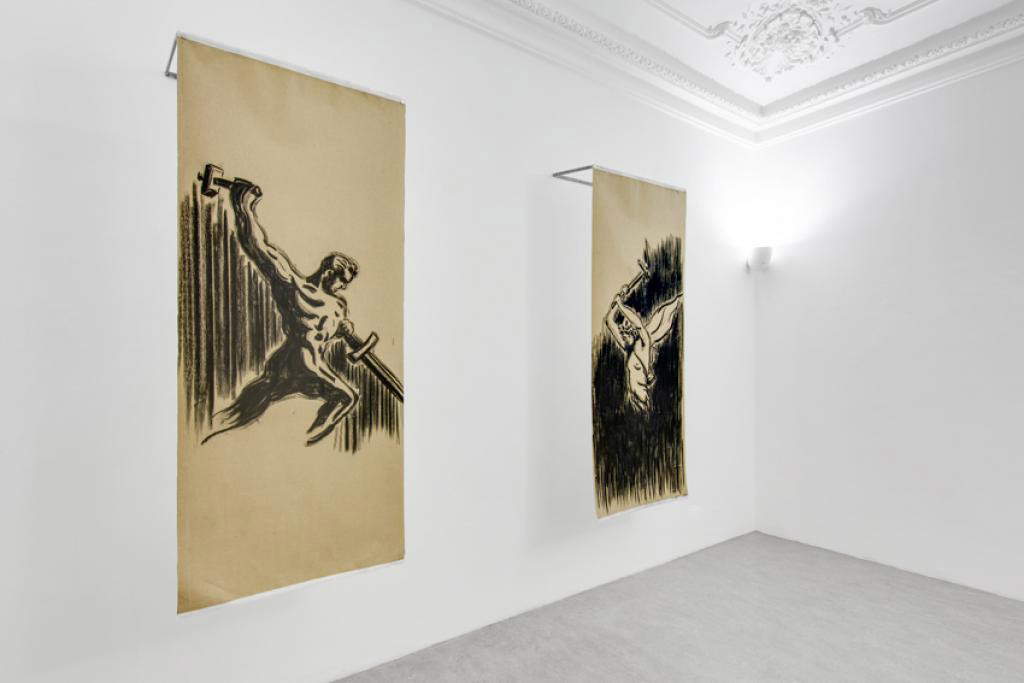 |
| Installation of the exhibition Days of a Future Past at Alberto Peola Artecontemporanea |
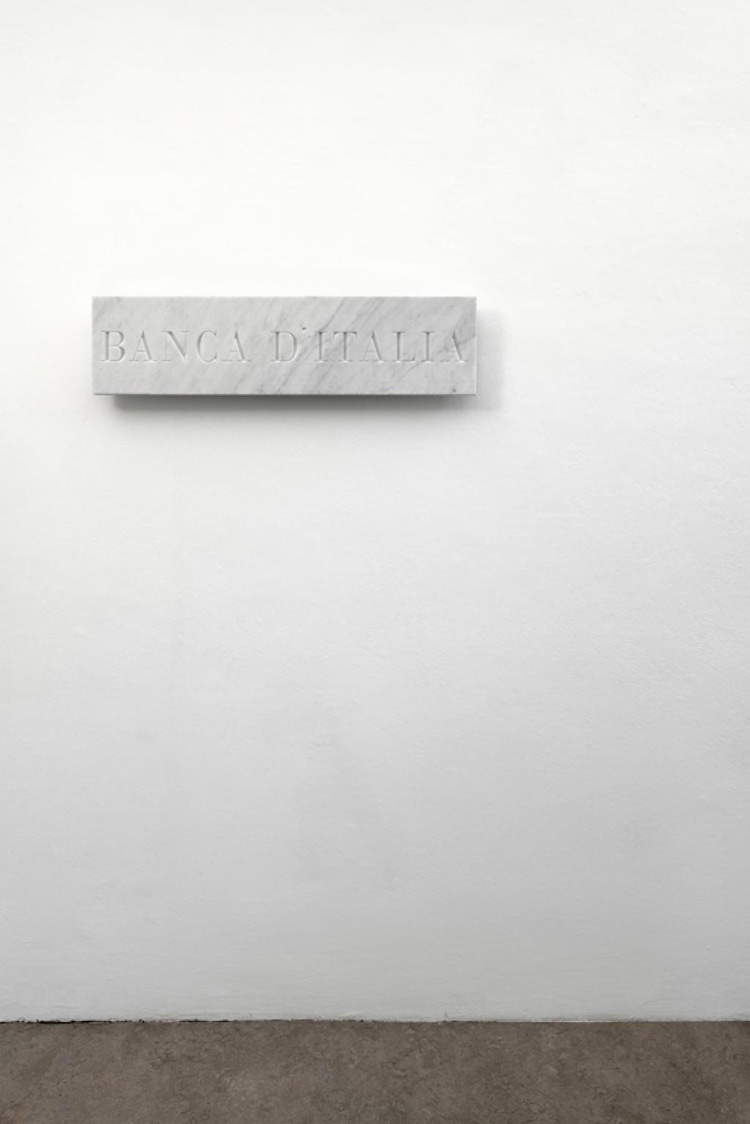 |
| Cosimo Veneziano, Bank of Italy (2014; Carrara marble, 23 x 90 x 3 cm; Courtesy Alberto Peola Artecontemporanea) |
I am very fascinated by short stories and histories, so my relationship with the written word is many times an initial source of constructing imagery.
Your art uses very different means of expression: drawings, sculptures, silkscreens, always under the banner of a bare and essential figurative style. What are the reasons behind Your technical-stylistic choices?
Design. The use of material and technique are fundamental elements for me, because an integral part of the work, the project and the material are for me elements that live in symbiosis. The material used is suggested by the project, it is a form of respect. Matter does not fit, it has its own organicity. To better clarify the concepts of material and organic, I describe the work Imago Mundi, created in collaboration with larchitect and artist Maurizio Cilli. Imago Mundi was born from a void, the lost part of a funerary monument, a Stüpa present at the MAO (Museum of Oriental Art in Turin). The lost part was the tower. We reconstructed the missing part with a 3D printer: this step was crucial because it is currently the only medium that allows you to build the artifact directly from the drawing without the use of manual dexterity and especially without the use of historical materials, such as marble or polystyrene, which are widely used with pantograph cutting. Using the 3D printer allows you to make use of synthetic substances without yet a defined culture, because by reconstructing a portion of an Indian monument you inevitably go up against another culture. The presence of the original Stüpa is marked with a disc of black Madurai marble the same size as the monument.
Warning: the translation into English of the original Italian article was created using automatic tools. We undertake to review all articles, but we do not guarantee the total absence of inaccuracies in the translation due to the program. You can find the original by clicking on the ITA button. If you find any mistake,please contact us.




























